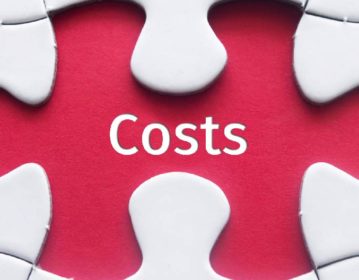
Companies running ERP software are at a crossroads with their software strategy: “Should I follow the vendors’ upgrade path or is it time to consider other options?”
Vendors want ERP users to upgrade on the vendor schedules, but that’s simply not the right fit for all (or most) customers.
CIOs know they need to invest in digital transformation and analytics to improve the customer experience, run smarter and stay competitive. But they’ve been burned by the rush to stay current in the past, sometimes hastily implementing solutions that failed to deliver on their promises.
Making matters worse, CIOs are seeing 89 percent of their IT budgets gobbled up by ongoing operations, limiting resources for new initiatives or updating tech.
In this less-than-ideal scenario, CIOs are struggling to know which software strategy decision to make.
And the ERP software vendors’ continuous upgrade path makes this decision difficult.
Forcing Upgrades While Withholding Support
In the 1990s and early 2000s, as many businesses discovered the value of ERP, the expensive cycle of continuous upgrades worked. Giant software vendors listened to their customers and created real enhancements that offered real value.
But over time, the real enhancements that delivered real value seemed to slow to a crawl. Customers spent millions of dollars to implement and upgrade their ERP systems, yet support quality faltered. To add insult to injury, some ERP vendors raised maintenance fees.
Naturally, many customers revolted. A vast majority of ERP users created customizations and integrations to meet their business needs.
Many ERP customers continue customizing their software today, but pursuing this flexibility comes at a price. Giant software vendors don’t support custom code, and some CIOs say that the very existence of custom code just gives their ERP provider an excuse to avoid delivering support.
Yet actual case data shows 65 percent of customer issues are related to custom code. Vendors fail to deliver updated and necessary features, yet they also choose not to support custom code. How are customers supposed to maintain their competitive edge without sacrificing stability?
Innovating Around the Edges with a Hybrid IT Strategy
Let’s return to the question, “Should I follow the vendors’ upgrade path or is it time to consider other options?” If ERP customers want to stay current without losing essential support, they now have excellent options outside of vendor upgrade paths.
Smart CIOs recognize the benefits of maintaining their stable ERP system. But instead of standing still, these CIOs focus their attention and energy on adding innovation around the edges of their ERP core.
By adopting a hybrid IT strategy, for example — as many analysts, including Gartner and Forrester advise — CIOs are able to maximize the value they’ve already built into their core systems of record. (There is simply no complete ERP cloud solution available that can fully replace the robust ERP systems that have matured over 30-plus years.) Re-investing these considerable savings into digital engagement systems helps their business grow and compete.
With additional funds, organizations can make investments in best of breed technologies such as mobile, social, and big data, presenting a very strong business case.
Here’s how we recommend implementing this strategy:
- First, we believe ERP customers should take a wait and see approach with regard to new software platforms from vendors.
- Then, these customers should consider a third-party support and maintenance strategy. This frees up as much as 90 percent of their overall annual support and ongoing maintenance costs.
- With their ERP maintenance and support cost savings realized, CIOs can re-direct these funds into initiatives that really move the needle for their business. Moving the needle means increasing revenue, cutting costs, or taking market share from competitors.
The CIOs I talk to like this strategy of keeping their core ERP and innovating around the edges. Plus, it’s an easy strategy to communicate that makes immediate sense. Consequently, CEOs and line of business managers are getting behind it, too.
Choosing the Right Path for Your Business
Vendor-dictated “mandatory evolution” backfired because it led to innovative new options for ERP software users. Companies can now choose a new path that frees up funds, frees up expertise, and focuses on overall value that has the power to deliver tangible business benefits.
From what I’m seeing in the industry, more companies are turning toward strategies that maintain their core ERP while encouraging targeted investments in truly new applications. This sort of thinking really changes what a business can accomplish and in what time frame. It’s the kind of innovation agility that energizes me because — for the first time in a long time — it helps put organizations on a truly smarter path.









